This site is part of various affiliate programs. Links may give us a small compensation for any purchases you make, at no additional cost to you. Please read the disclaimer policy for full details.
If you don’t have the time to go through the whole article, then when comparing 16mm vs 24mm lenses:
- A 16mm lens can provide more interesting points of view for landscapes, especially if you want some exaggeration in the foreground.
- A 24mm lens is more linear and tame with less exaggeration, but you can get your hands on tilt-shift lenses for a different approach to your photos.
- It is significantly easier to get your hands on a 24mm lens, especially if you want a prime with wide aperture. Moreover there is a bigger variety of 24mm lenses on the market at different price points.
- A 16mm has a wider field of focus, meaning you can get more things in focus, if you focus at the hyperfocal distance.
- For general use the 24mm is a better choice because you can shoot everyday things easily without being too much in the face of your subjects and also with less exaggeration.
If you ask 100 landscape photographers what lenses they own, at least 50 of them will tell you that they own a 16-35mm lens. This lens is great because it incorporates three great focal lengths: 16mm, 24mm, and 35mm. In this article we will go through 16mm vs 24mm focal lengths and their pros and cons.
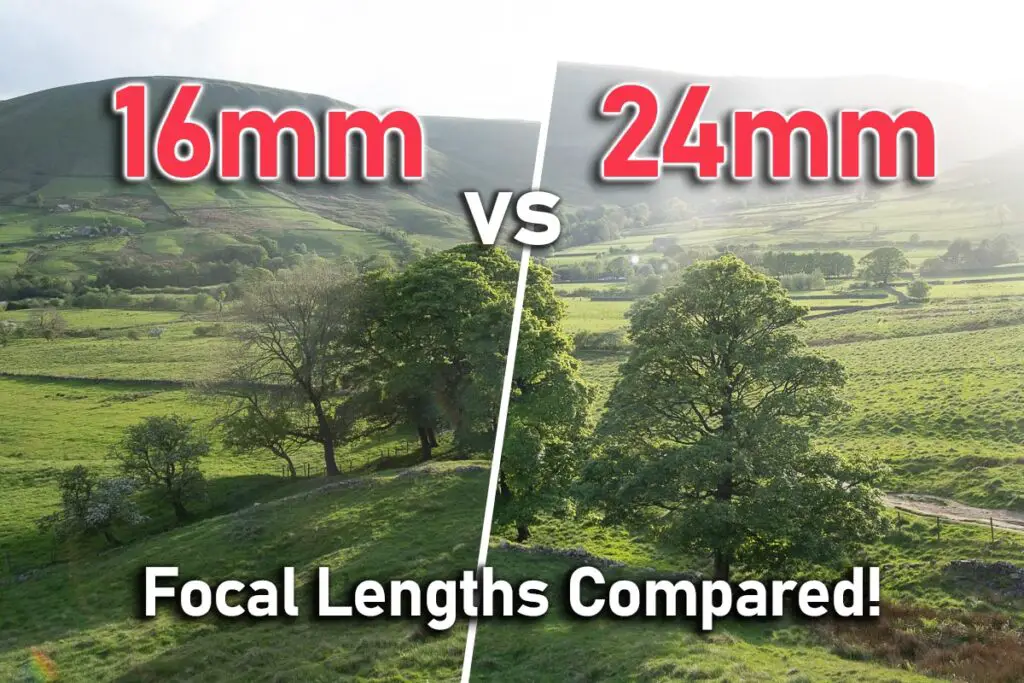
What does a 16mm lens do well?
The 16mm focal length is a weird one. It is popular but not that easy to obtain in a prime lens, however it provides an interesting perspective that can be very useful for astrophotography. It falls in the middle of the ultrawide focal lengths, which is great.
16mm Lens Availability
Getting a 16mm prime lens will be tough, as for some reason, there aren’t many options to begin with. Canon makes one entry-level 16mm lens for the RF mount, at a very reasonable price. The other options are third-party manufacturers like Meike or Samyang / Rokinon.
On the other hand, you can find a plethora of zoom lenses that incorporate a 16mm focal length. Starting from the most known and used 16-35mm zoom, which most manufacturers produce, to lenses like Canon’s new 15-35mm f/4.5-6.3 IS STM lens. If you go the zoom route, there are lenses for every budget and need.
16mm for Landscape Photography
When shooting landscapes, you often want to capture most of the scene, if not all of it. With a 16mm focal length, you can do that easily because you have an extremely wide field of view, 97 degrees wide.
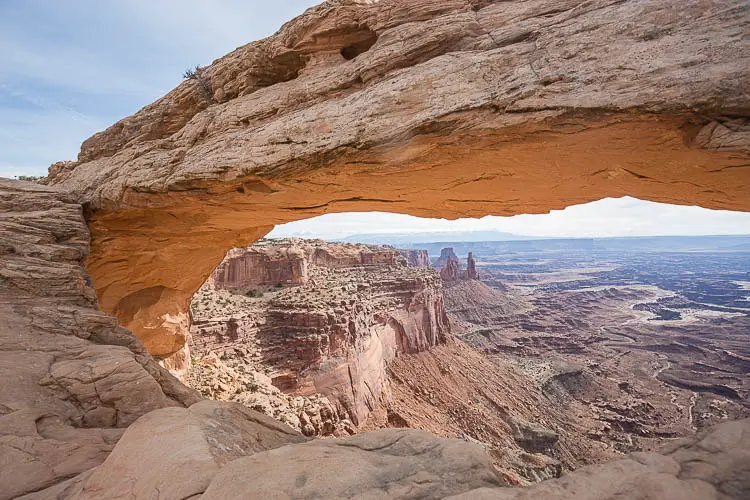
With a focal length this wide, you can play with the foreground and background elements. Since the focal length helps with the exaggeration of certain elements, you can easily put elements in the foreground that will appear to be larger than they actually are, and with that, they can aid your composition better.
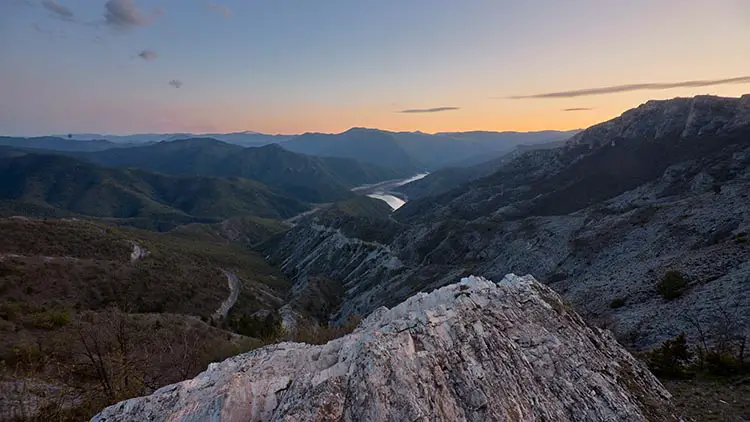
Depending on the manufacturer and lens quality, distortion will be handled differently. Most rectilinear lenses nowadays control distortion quite well, and what is left of the distortion is easily corrected in post-production.
What does a 24mm lens do well?
The 24mm focal length can be found on most kit lenses. That is because most photographers consider 24mm as the default wide angle focal length. It is true that it is quite wide, but it is not an ultrawide focal length by any means.
Given that it is not an ultrawide lens, the distortion at this focal length is not bad at all, especially with modern lenses. Pretty much every lens is rectilinear and distortion corrected, and the little distortion that isn’t optically corrected can be removed with a single button in your favorite photo editing software.
24mm Lens Availability
Unlike the 16mm focal length, when it comes to 24mm you will find a plethora of lenses as both primes and zooms.
Depending on your budget and needs, you will find that most of the manufacturers have an f/1.4 variant of this lens. It will cost a bit more, but that is the pinnacle of lens manufacturing.
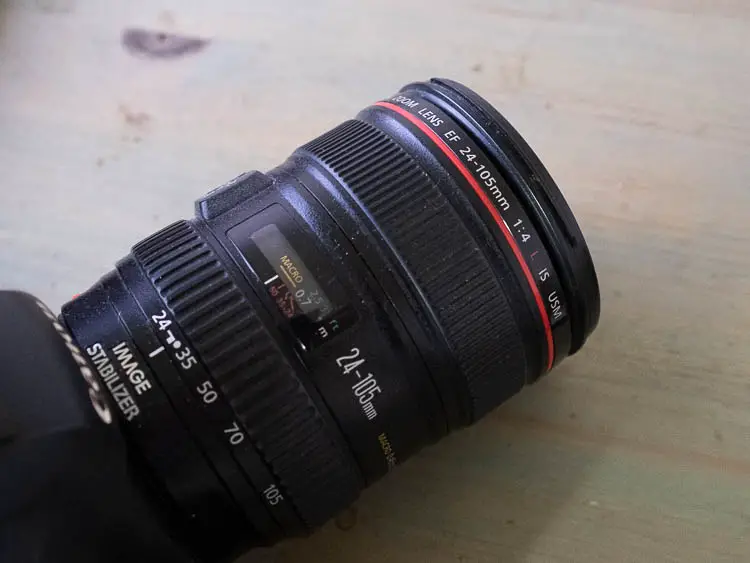
Of course, if your budget is tighter, you will find all sorts of cheaper 24mm lenses from many manufacturers. Or you will find zoom lenses that incorporate this focal length among others.
If you feel like experimenting with specialty lenses, you can find tilt-shift lenses at this focal length, which will open new composition and framing methods.
24mm for Landscape Photography
Shooting landscapes with 24mm focal length can be rewarding, but requires more careful composition.
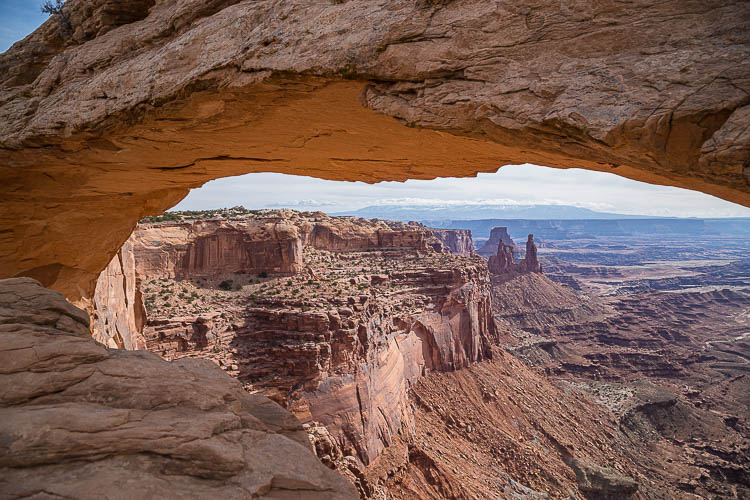
Since 24mm doesn’t exaggerate any given part of the image, it can end up giving a just average result, but of course, your creativity can and should counter that.
On the other hand, sometimes you need to avoid exaggerating any particular elements of your photo, and this is where the 24mm shines.
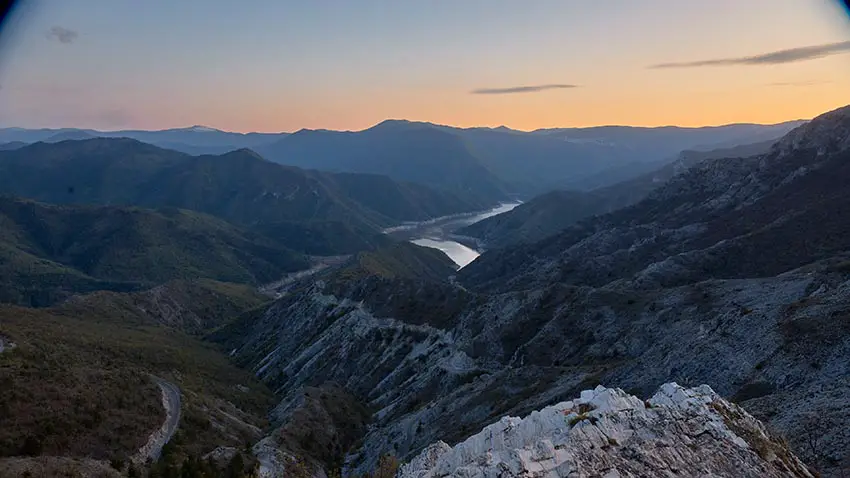
Moreover, if you can afford it, or you have the will to fiddle with a tilt-shift lens, you can do some weird and interesting stuff with it.
16mm vs 24mm for Landscapes
It is hard to compare these focal lengths since they do different things. The 16mm exaggerates elements that are near the camera, while the 24mm provides a more tame composition with less exaggeration.
Due to the focal length, you might see more distortion in a 16mm lens, especially since you will be limited to zoom lenses. A 24mm lens will suffer less from these issues.
If you are willing to sacrifice resolution, a 16mm lens can simulate a 24mm lens if cropped.
When we compare both lenses, it is obvious that the 16mm lens will have a significantly wider field of view. And with a wider field of view you can get a deeper field of focus. Meaning that with a 16mm lens, you can have more in focus when you focus on the hyperfocal distance.
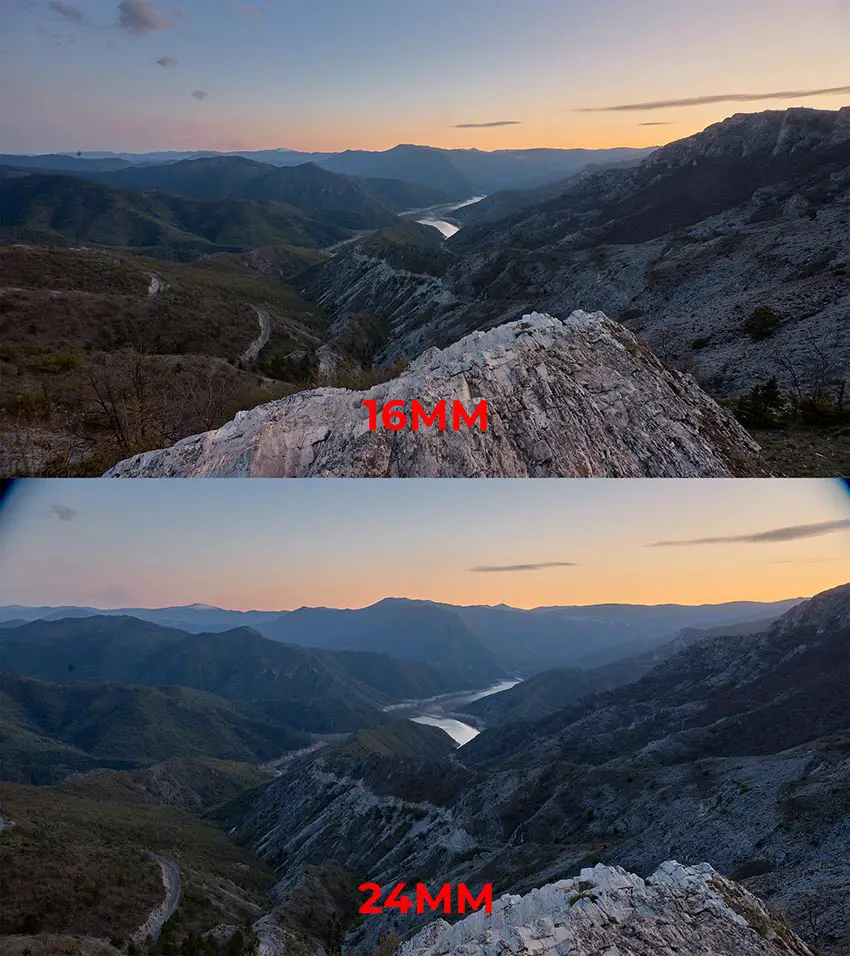
That said, there is no clear winner here. The winner will depend on what you want to achieve, and how you want to achieve it.
24mm vs 16mm for General Use
In this case, using a 16mm lens on a full-frame camera for general use will be a bit challenging. Mainly because it is extremely wide, so if you want to photograph people, your kids, or pets with a lens like this, you will have to be quite in their faces, in order to have a somewhat portrait-looking photo.
That will come with significant facial features exaggeration, which won’t be flattering at all.
A 24mm lens, on the other hand, is more useful in this case. Yes, it will suffer from the same issues that the 16mm lens will suffer from, but to a smaller extent. In other words, they are bearable and can be managed.
It will be quite hard to get a photo with some subject separation with a 16mm lens, while it will be significantly easier to do it with a 24mm lens. Especially since it is easier to get your hands on a wide apertured 24mm lens.

Read More:

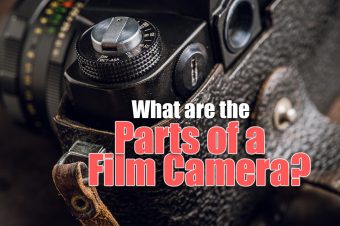




2 Responses
R. Schleyer
An update would be nice on the new M.Zuiko 8-25mm f/4 lens from OM Systems, which is high-performance in my fresh experience (having used a 24mm equiv. prime and a 24-80mm equiv. zoom lens on digital cameras in the past). The 8mm (16mm equiv.) lens allows shots otherwise impossible due to subject crowding, especially buildings–that is the point, not just that it is nice to have a wider field of view.
Tim Daniels
Looks like an interesting lens. I’ll certainly test it out if I get the opportunity.